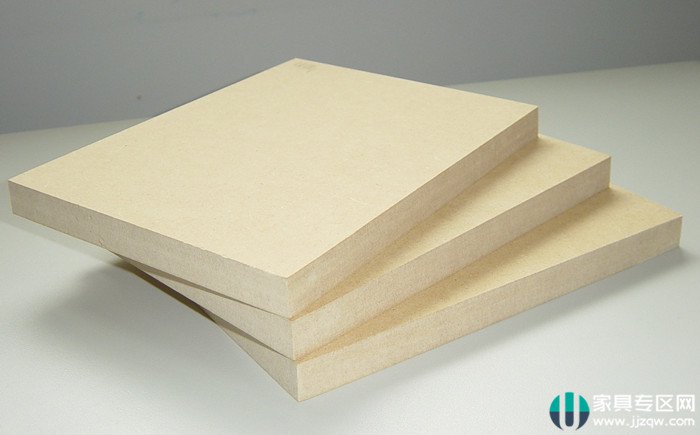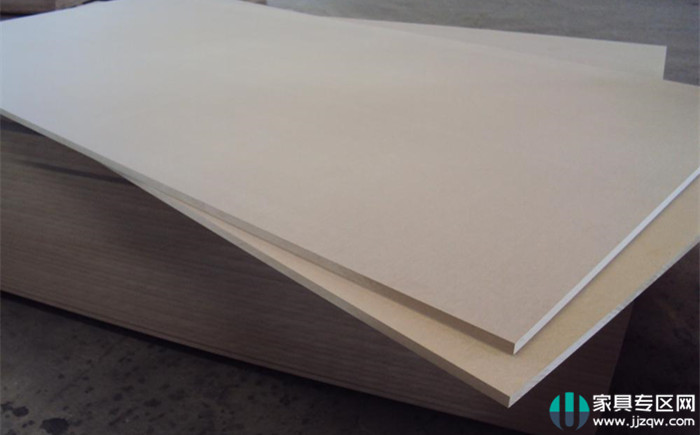Fiberboard production and processing characteristics and market demand analysis

Fibreboard is one of the most widely used products in China's furniture manufacturing industry. With the further tightening of the national environmental protection policy, the pattern of the sheet industry has undergone tremendous changes, and the workshops with backward production capacity and low environmental protection index have been eliminated. It is the improvement of the average price of the industry and the impact on the overall price of the downstream furniture manufacturing industry.
I. Analysis of fiberboard and its production and processing characteristics
1. The product has good processing performance and wide application.
The fiberboard is re-pressed by wood fiber or other plant fiber through physical processes. The surface is flat, suitable for coating or veneer to change the appearance, the internal physical properties are good, some properties are even better than solid wood, the structure is even and easy to shape, and it can be engraved. The deep processing of the wash and the fiberboard have outstanding advantages in bending strength and impact strength, and are more widely used than other plate types.
2. Realize comprehensive utilization of timber resources
Since the main raw materials of fiberboard are derived from three remnants and sub-small fuelwood, it satisfies the demand for wood products of residents while reducing the environmental side effects caused by burning and corruption, realizing the comprehensive utilization of resources, protecting forest resources and increasing The farmers’ income and the improvement of the ecological environment have played a positive role.
3, high degree of industrial automation, high cost performance
The fiberboard industry is the most automated panel industry in all wood-based panel manufacturing. The average production capacity of a single production line has reached 86,400 cubic meters per year (2017 data). The advantages of scale and intensification are obvious, and the wide range of raw materials makes the fiberboard more cost-effective. High, deeply favored by the majority of users.

Second, the industry supply analysis
1. Supply slows down and enters a balanced development period
China is the world's largest producer of fiberboard. In 2017, the national fiberboard output was 62.97 million cubic meters, accounting for 21.4% of the national wood-based panels, with an output value of about 101.2 billion yuan. From the timeline point of view, from 2008 to 2011, due to the maturity of technology and the strong demand in the downstream market, the growth rate of fiberboard production reached a rapid growth period, with a compound growth rate of 24.14%. From 2012, the output growth rate slowed down and gradually bid farewell to the high growth era. The industry entered a structural adjustment period, the backward production capacity was phased out, and the supply-demand relationship became more balanced.
With the improvement of people's living standards and environmental awareness, the development of the fiberboard industry has shown that backward equipment has been phased out, and environmentally-friendly and functional products are more favored.
2. Capacity distribution shows regional concentration characteristics, and East China's output ranks first
The distribution of raw materials and end markets is a major factor affecting the location of fiberboard manufacturers. There is a certain economic transportation radius for the sales and purchase of fiberboard and its raw materials. Therefore, the eastern and southern regions with abundant raw material resources and concentrated downstream industries have become the concentrated production capacity of fiberboard. In 2017, the production of fiberboard in East China accounted for 47.0% of the country's total output, which is the largest production area of ​​fiberboard. The main producing provinces in East China are Shandong Province (21.6%), Jiangsu Province (12.8%) and Anhui Province (6.3%).
3. The degree of automated production is relatively high, showing scale effect; industrial structure is accelerating adjustment, and backward equipment is gradually eliminated.
Compared with plywood and particleboard, the fiberboard industry is relatively more automated due to the earlier development of fiberboard production and relatively mature technology. The data shows that with the improvement of the automation of China's fiberboard manufacturing equipment, in 2017, the average annual production capacity of fiberboard manufacturing enterprises has reached 100,000 cubic meters. At the same time, the average production capacity of a single fiberboard production line has also increased from 46,500 cubic meters per year in 2008 to 86,400 cubic meters per year in 2017, showing a relatively significant economies of scale.
There are many fiberboard production enterprises, and some small enterprises face the dilemma of survival due to outdated equipment, backward technology and unstable performance. The National Development and Reform Commission's "Industrial Structure Adjustment Guidance Catalogue (2011)" lists the medium and high density fiberboard production equipment with a single line of 50,000 cubic meters per year as a "restricted type" construction project to guide the future investment direction of fiberboard. On the other hand, some of the dominant enterprises in the industry rely on the advantages of scale efficiency, high utilization rate of raw materials and product quality, and the production efficiency continues to grow at a high speed. In addition, some enterprises seek differentiated product strategies, and exert their strengths in the direction of flood-proof boards, boring and milling boards, and low aldehyde boards, and also obtain better benefits. The industry as a whole has a large-scale and differentiated development pattern, and the development is more benign and healthy.
Market demand analysis
Fiberboard applications cover all aspects of daily life of residents, furniture, kitchen utensils, flooring, wooden doors, handicrafts, toys, decoration, packaging, PCB consumables, sports equipment, shoe materials and many other fields, can be applied to fiberboard. With the development of the national economy, the acceleration of urbanization construction, and the improvement of consumer consumption, the demand for fiberboard and other wood-based panels is strong. According to the report of China's Wood-based Panel Industry (2018), the consumption of fiberboard products in China is about 63.7 million cubic meters in 2017. From 2008 to 2017, the average annual growth rate of fiberboard consumption reached 10.0%. At the same time, with the improvement of people's environmental protection and quality awareness, the requirements for the quality and environmental protection of fiberboard and other wood-based panel products are getting higher and higher, and the demand for products with stable physical properties and high environmental protection level is more vigorous.
Ningbo Teamer Imp. & Exp. Co., Ltd. , https://www.dokour.com